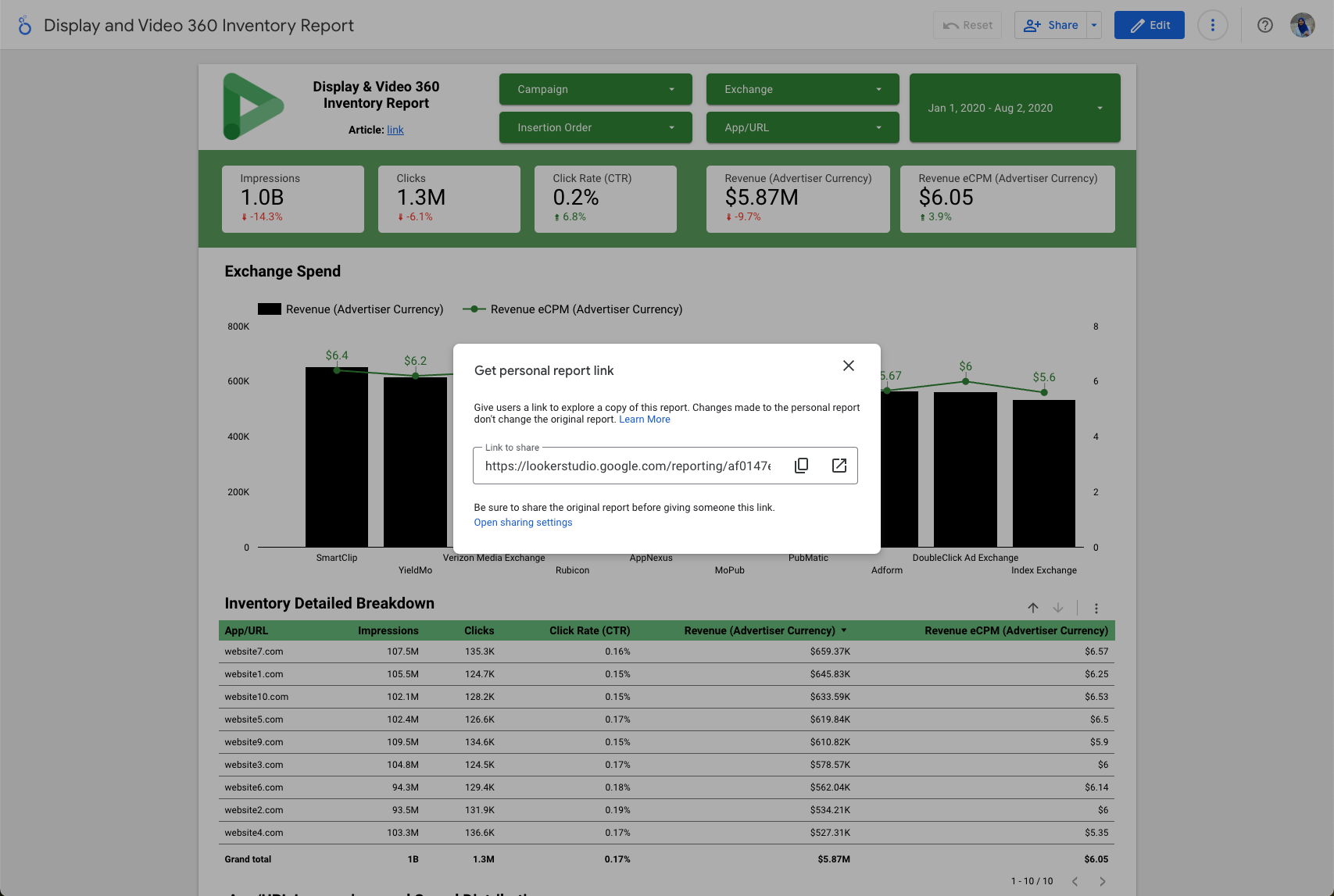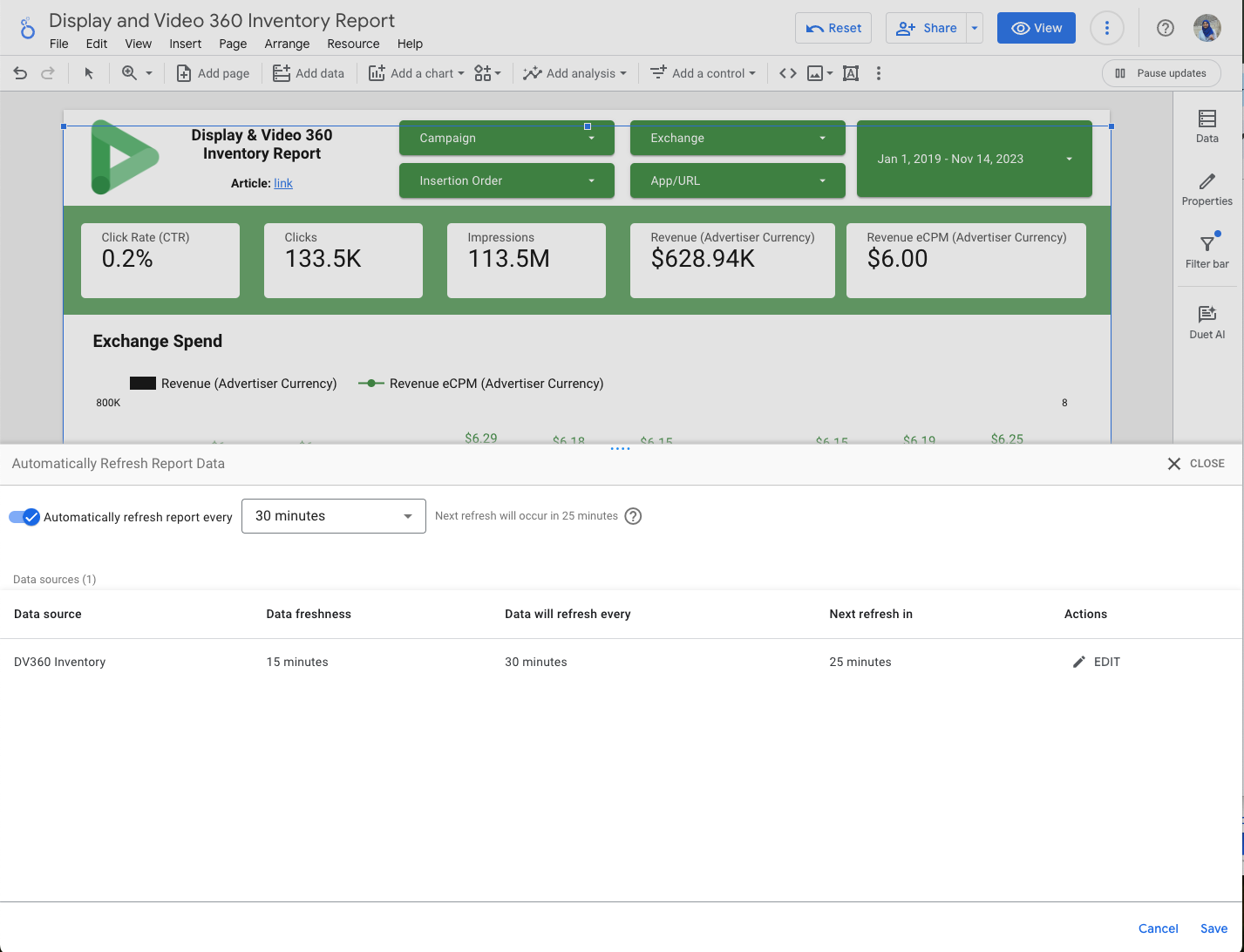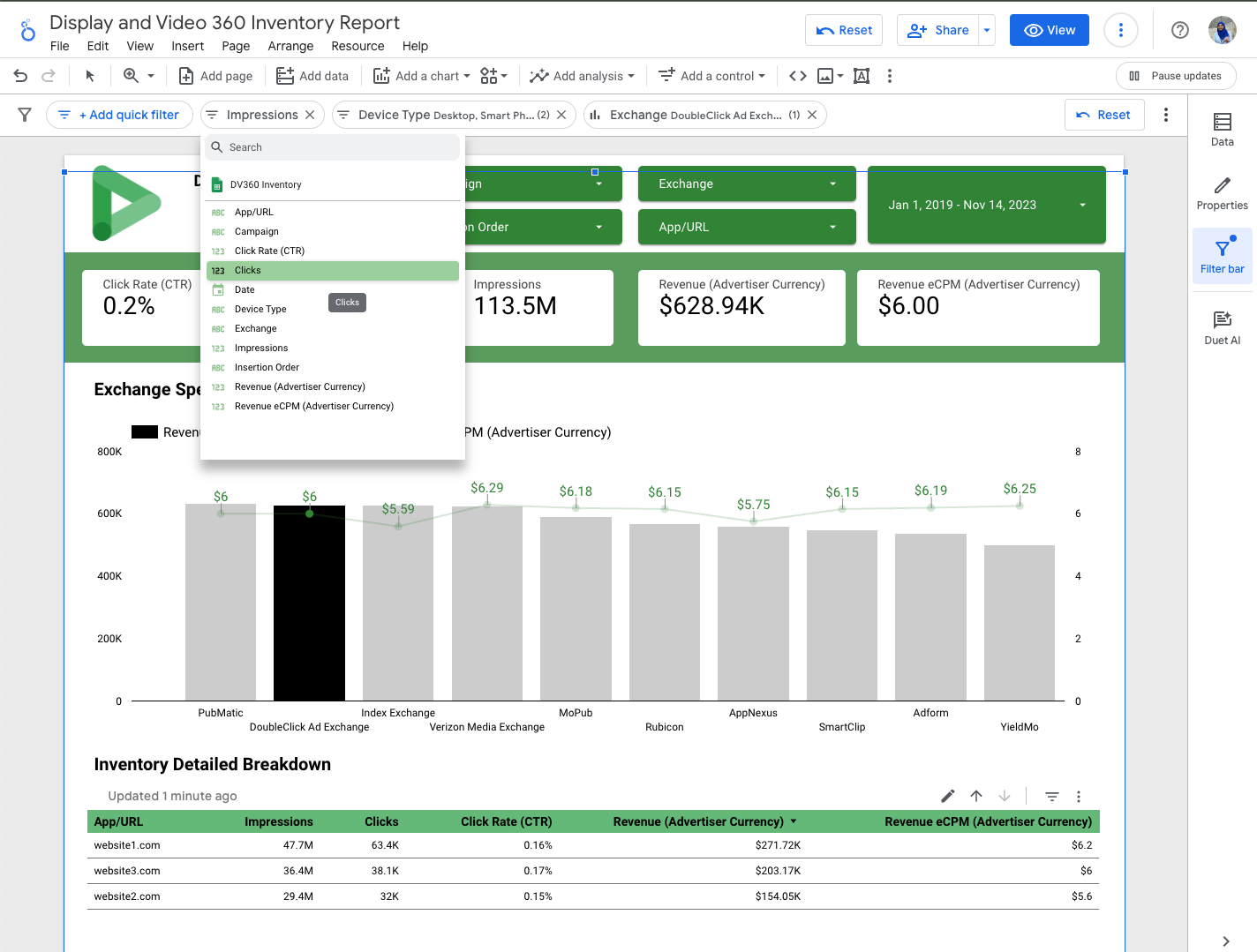Looker Studio brings powerful explorations, fresher data and faster filtering
Aqsa Fulara
Product Manager, Google Cloud
Looker Studio supports self-serve analytics for ad hoc data, and together with Looker, contributes to the more than 10 million users who access the Looker family of products each month. Today, we are introducing new ways for analysts to provide business users with options to explore data and self-serve business decisions, expanding ways all our users can analyze and explore data — leading to faster and more informed decisions.
Introducing personal report links
Business users often leverage shared dashboards from data analysts, which contain key company metrics and KPIs, as a starting point and want to explore beyond the curated analysis to arrive at more specific insights for their own data needs. The introduction of personal reports in Looker Studio enables this activity, delivering a private sandbox for exploration so users can self-serve their own questions and find insights faster – without modifying the original curated report.
Whether you share a report link in group chats or direct messages, an individual copy is created for each user that opens it so that everyone gets their own personal report.
Personal Looker Studio reports are designed to be ephemeral, meaning you don’t need to worry about creating unwanted content, but if you land on valuable insights that you want to keep, you can save and share these reports with new links, separate from the original report you built from.
You can learn more about how personal reports work and how to use them in our Help Center.


Looker Studio Personal Link Visual
Automated report updates
Your analysis and insights are only as good as the freshness of your reports. Looker Studio users can now enable their reports to auto-refresh data at a predefined cadence, so critical business decisions are based on current and updated information.
To learn more about how auto-refresh works, including details on how it works with cache, presentation mode, and existing data freshness settings, visit our Help Center.


Looker Studio Auto refresh feature Visual
Faster filtering in reports
Quick filters enable powerful exploration to slice data and uncover hidden patterns and insights within the context of your report. Quick filters don’t affect other users’ views, so whether you are exploring in a shared or personal report, your unique view is only shared once you are ready. The filter bar also gives you a complete picture of whether applied filters originate from interactive cross-chart filtering or quick filters.
Learn more about how to add quick filters in reports in our Help Center.


Looker Studio Quick filters and filter bar feature Visual
Pause updates
Configuring multiple filters and charts for exploration can quickly add to the query volume, even with presence of a cache. We’ve heard from analysts that they want better control over running queries, so they can optimize query volume and, thus, query costs.
We have added the ability to pause updates, giving you the flexibility to fully configure chart elements like fields, filters, parameters, sorting, and calculated formulas before running any data updates. You can then simply resume updates to see the updated data. Pausing updates does not prevent any style changes, so you can continue to modify design elements and other detailed styles and formatting without running a single query. Learn more about this feature in our Help Center.
The new pause report updates feature in Looker Studio has meaningfully improved the report creation experience. Asset producers can build and test reports without wasting database resourcing waiting for data to reload.
Caroline Bollinger, BI Tooling Product, Wayfair
View underlying data
Data accuracy is one thing — being able to see its detail is another. As analysts configure charts to build reports and design information hierarchy, previewing the underlying data is important for understanding context and seeing what data is available and its structure so you can make the best decisions about what to include in your analysis. It’s also handy when troubleshooting or customizing your reports.
This feature allows analysts to preview all the data that appears in a chart, including the primary dimensions, breakdown dimensions, and metrics. Learn more about how to view underlying data in our Help Center.


Looker Studio Data preview feature Visual
With this collection of updates, Looker Studio users can now easily know the data they share is up-to-date, inspect it in detail, rapidly create filters, and share personal links to reports. The goal remains, as always, to empower users to make smart and impactful decisions based on their enterprise data. To stay on top of all our latest features, view our release notes. Access Looker Studio for free and learn more about Looker Studio Pro.



